Idaho is a state that reveals itself slowly, like dawn rising over snow-tipped peaks. It’s a land of grand silences and fierce beauty — where rivers carve deep into ancient stone, forests whisper of time before men, and horizons stretch as if the world were still being made.
Often misunderstood or overlooked, Idaho is the beating wilderness heart of the American West. Its soul belongs to the Sawtooth Mountains, the Snake River Plain, and the wild highlands where elk and eagles still roam. Yet beyond its landscapes lies a spirit equally vast — that of a people shaped by endurance, independence, and quiet pride.
The state’s story begins in deep time, where volcanic fires birthed the earth’s crust and glaciers sculpted the valleys. It passes through the trails of the Nez Perce, the daring of Lewis and Clark, the silver dreams of miners, and the pioneers who followed wagon ruts into the unknown. Today, Idaho balances rugged nature with subtle sophistication — a place where cities like Boise pulse with creativity and where mountain hamlets like Ketchum and McCall keep the rhythm of a simpler life.
To explore Idaho is to travel not only across land but through time — from basalt deserts to alpine meadows, from frontier relics to thriving communities. Every bend in the river and turn in the trail offers discovery.
In Idaho, the wilderness is never just scenery — it’s a companion, a teacher, a mirror. It reminds us that beauty doesn’t need polish, and freedom doesn’t demand noise. It’s enough to stand beneath an open sky, the wind in the pines, and know that you’re part of something vast, wild, and alive.
Boise — The Beating Heart of the Modern West

Idaho’s capital, Boise, is the unexpected revelation of the Pacific Northwest — a city that balances mountain grit with modern grace. Cradled by the Boise River and framed by foothills, it’s a place where the wild never feels far away. Cyclists roll through downtown, kayakers glide past willow-lined banks, and the scent of sage drifts from the desert beyond.
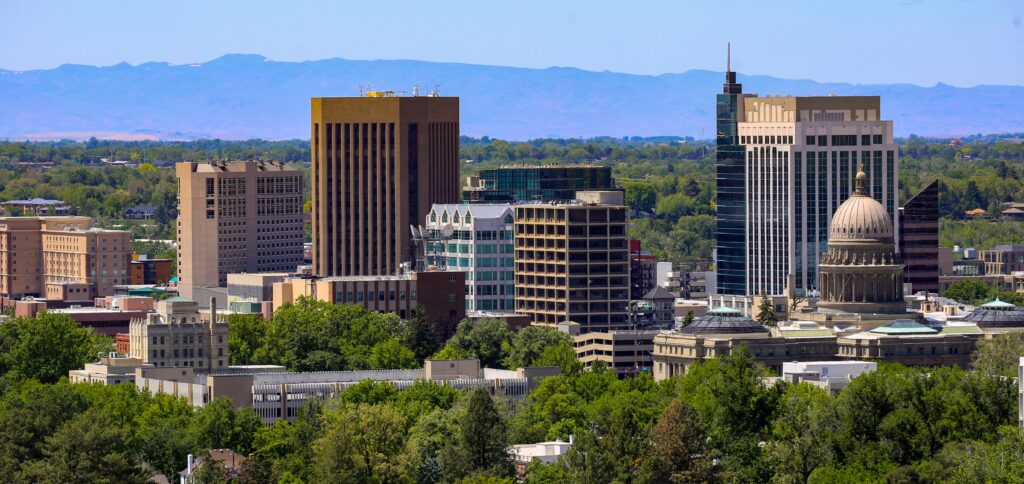
Boise’s heart beats strongest in its people — warm, creative, and fiercely proud of their home. The Boise River Greenbelt weaves through the city like a ribbon of calm, connecting neighborhoods, parks, and paths where joggers and herons share space. Downtown Boise hums with energy: art murals splash across old brick walls, local coffee shops fill with conversation, and the Capital City Public Market buzzes with farmers and artisans.
The city’s Basque heritage — one of the largest outside Spain — gives it a unique flavor, visible in festivals, food, and the joyful rhythms of the Basque Block. At night, Boise glows softly, its skyline modest but full of life.
What makes Boise special is its scale: big enough for ambition, small enough to breathe. It’s not a city that tries to impress — it simply invites you to belong.
Sun Valley & Ketchum — Where Mountains Meet Art

In the heart of the Sawtooth Mountains, Sun Valley gleams like a winter star. America’s first destination ski resort, it was born in the 1930s as a playground for dreamers — skiers, writers, and wanderers who came seeking both motion and meaning.

Today, its slopes remain legendary, but Sun Valley’s magic runs deeper than snow. In summer, the mountains turn green and gold, the air hums with trout streams, and trails wind through meadows where wildflowers bloom like confetti. Nearby Ketchum, its quieter twin, carries an unassuming sophistication — a haven for artists and thinkers who cherish solitude.
This is where Ernest Hemingway wrote, hunted, and finally rests, his legacy blending with the wildness that inspired him. The Sun Valley Museum of Art and annual Wagon Days Parade celebrate the area’s rich cultural pulse, proof that creativity thrives best where the horizon is wide.
Sun Valley and Ketchum embody Idaho’s soul — rugged yet refined, a meeting of wilderness and wonder where art and nature share the same breath.
Coeur d’Alene — The Lake of Light and Pines
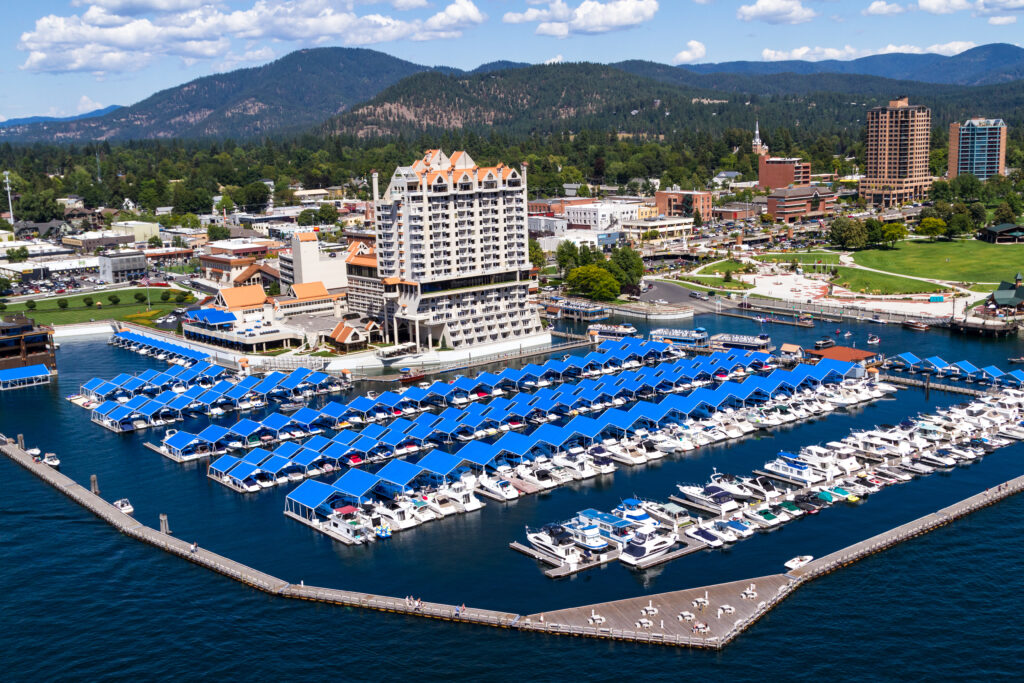
At the far north of Idaho, Coeur d’Alene lies nestled beside one of the most beautiful lakes in North America — a 25-mile expanse of sapphire water surrounded by pine forests and misty hills. To stand on its shores is to feel serenity itself, the kind that silences even thought.
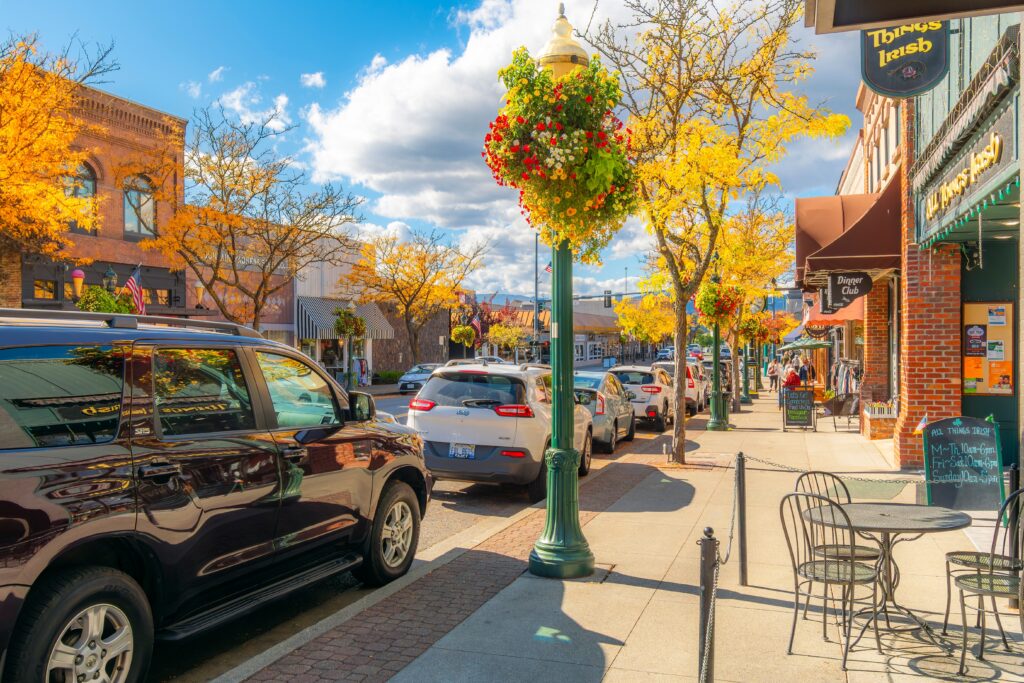
Once a logging outpost, Coeur d’Alene has grown into a refined mountain town, balancing outdoor adventure with quiet luxury. The Lake Coeur d’Alene Resort, with its floating boardwalk and panoramic views, feels like a mirage of comfort amid raw beauty. Yet step beyond town, and the wilderness quickly reclaims the scene: hiking trails lead to hidden coves, bald eagles circle above the water, and sunsets melt into the mirror of the lake.
In every season, Coeur d’Alene transforms — a summer haven for boaters and kayakers, a winter retreat wrapped in stillness. The town’s name, given by French fur traders meaning “heart of the awl,” captures its nature perfectly: sharp, brilliant, unforgettable.
Coeur d’Alene is not just a place to visit — it’s a place to exhale.
Idaho Falls — Gateway to the Rockies

Set along the sweeping Snake River, Idaho Falls stands as the gateway to the Rocky Mountains — a frontier city where nature and modern life meet in quiet harmony. Its name comes from the river’s gentle cascades, and the River Walk remains the city’s beating heart, a five-mile loop where locals stroll past flowerbeds, bridges, and the distant silhouette of the Grand Tetons.

Once a rugged trading post, Idaho Falls has grown into a hub of science, art, and adventure. The Museum of Idaho tells stories that stretch from the Ice Age to the Space Age, while nearby Craters of the Moon National Monument reveals a surreal volcanic landscape — a reminder that the earth beneath Idaho is as alive as the rivers above it.

Yet, despite its progress, Idaho Falls has kept its frontier soul. Farmers’ markets still fill the air with the scent of sage and honey, and sunsets over the Snake remain the town’s most faithful performance. For travelers heading toward Yellowstone or Jackson Hole, it’s more than a stop — it’s a first glimpse of the wild spirit waiting beyond.
Twin Falls — Land of Water and Stone

If Idaho had a natural cathedral, it would rise above Twin Falls — a city where the Snake River cuts a vast canyon and waterfalls thunder like ancient drums. The star of the show is Shoshone Falls, often called the “Niagara of the West.” At 212 feet tall, it plunges higher than Niagara itself, transforming sunlight into mist and rainbows.
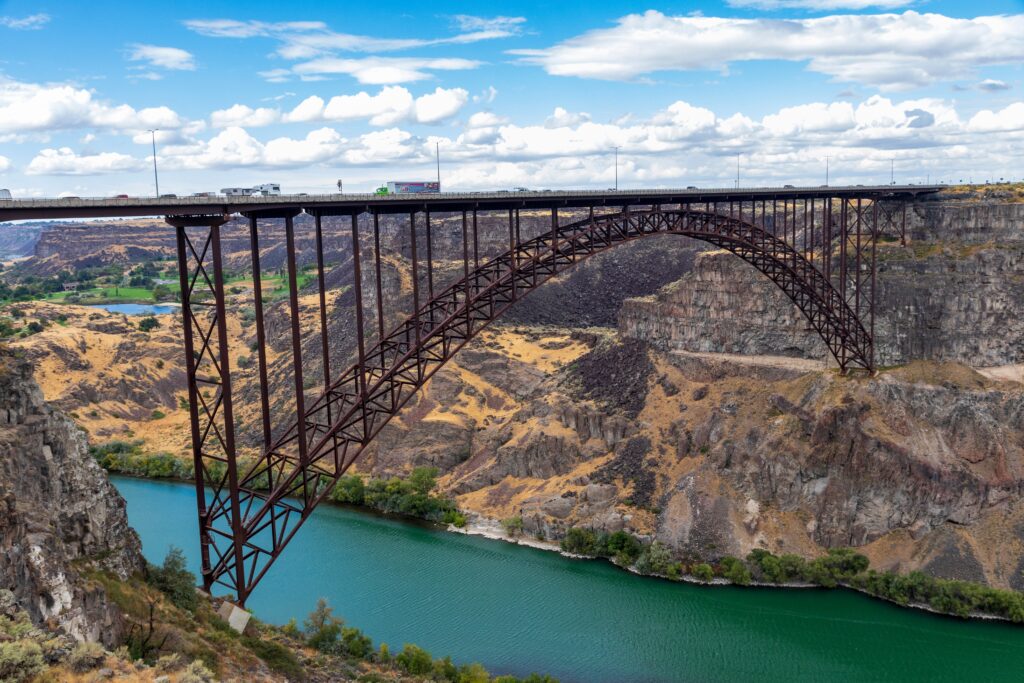
Above the canyon, the Perrine Bridge arches gracefully 486 feet over the river — a marvel of engineering and courage. From here, BASE jumpers leap into open air, their parachutes blooming against the basalt cliffs. Below, kayakers drift through calm waters, tracing a path carved over eons.

But Twin Falls is more than spectacle. It’s a city of wide horizons and generous hearts, shaped by its connection to land and water. Agriculture thrives in the rich volcanic soil, and local cuisine celebrates that bounty. Each season brings a new color to the canyon — spring green, summer gold, autumn amber.
In Twin Falls, every view feels like an invocation — a call to look deeper into nature’s power and grace.
Sandpoint — Idaho’s Alpine Gem by Lake Pend Oreille
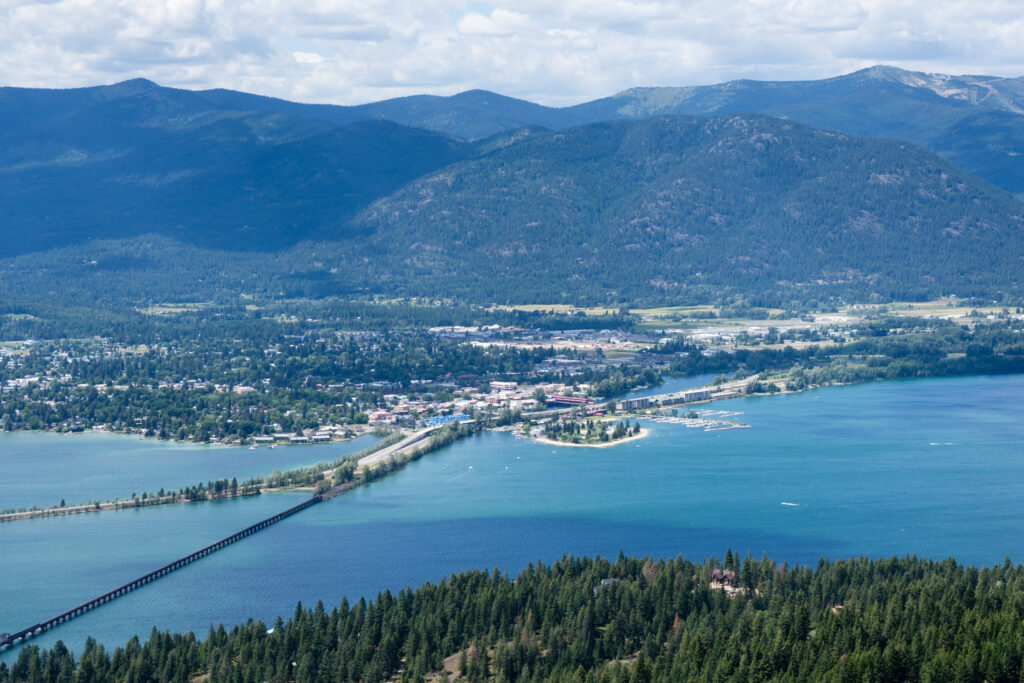
Nestled between mountains and mirrored in the vast waters of Lake Pend Oreille, Sandpoint is Idaho’s alpine jewel — a small town with the spirit of a great landscape. The lake, the largest in the state, stretches like a sapphire sea, bordered by the Cabinet and Selkirk Mountains, whose snow-capped peaks seem to lean protectively around it.

Sandpoint thrives on harmony: between art and wilderness, solitude and community. The Schweitzer Mountain Resort draws skiers in winter, while summer turns the lake into a playground for sailing, kayaking, and reflection. Downtown, boutiques and galleries line streets where music drifts from open doors, and the Festival at Sandpoint fills warm evenings with song.

What makes Sandpoint unforgettable is its balance — wild beauty softened by human warmth. At dusk, when the sun slips behind the mountains and the lake becomes glass, one understands why so many who come here never truly leave.
Sandpoint is where Idaho’s ruggedness meets its heart.
McCall — The Lake Town of Endless Summers
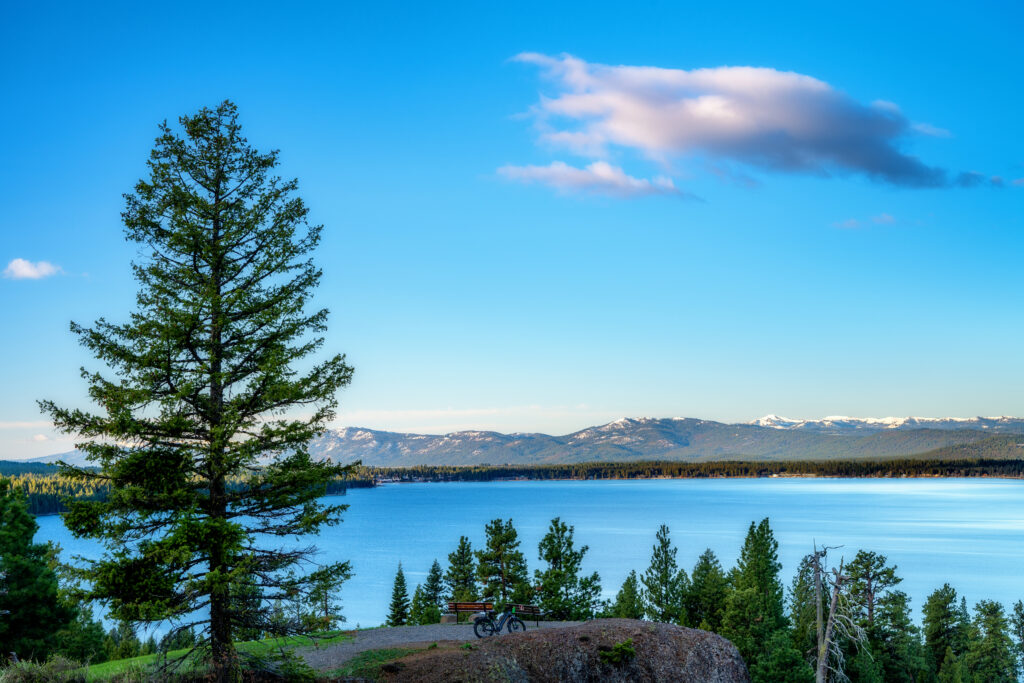
Tucked along the edge of Payette Lake, surrounded by deep green forests and granite peaks, McCall feels like a memory of summer itself. Once a logging town, it’s now Idaho’s beloved mountain retreat — a place where families, adventurers, and dreamers return year after year to rediscover simplicity and joy.
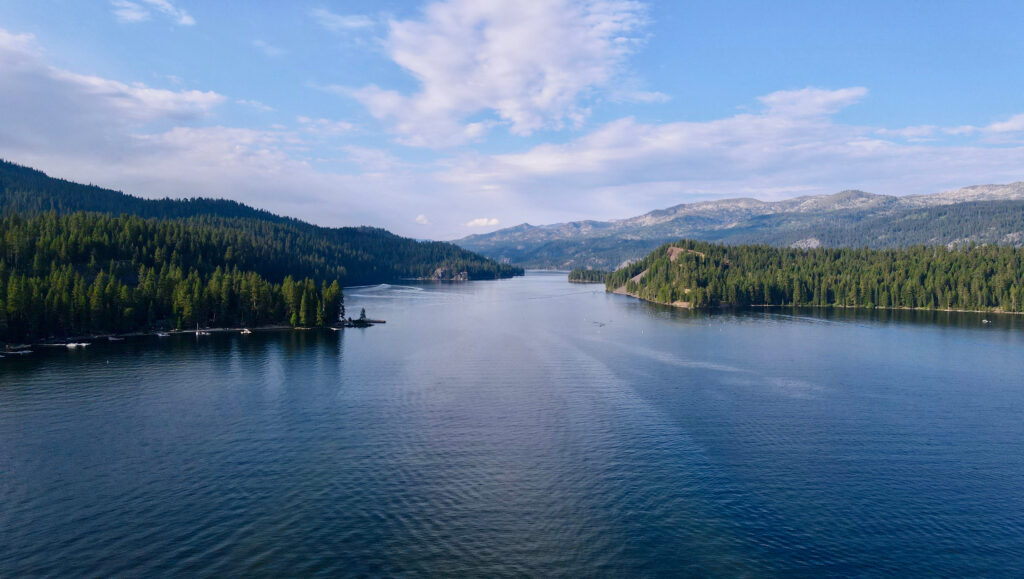
In summer, McCall hums with life: boats glide across the clear blue water, children build castles on the sandy beaches, and hikers wander into Ponderosa State Park, where towering pines perfume the air. In winter, snow transforms the town into a postcard, and Brundage Mountain Resort offers some of the best skiing in the Northwest.
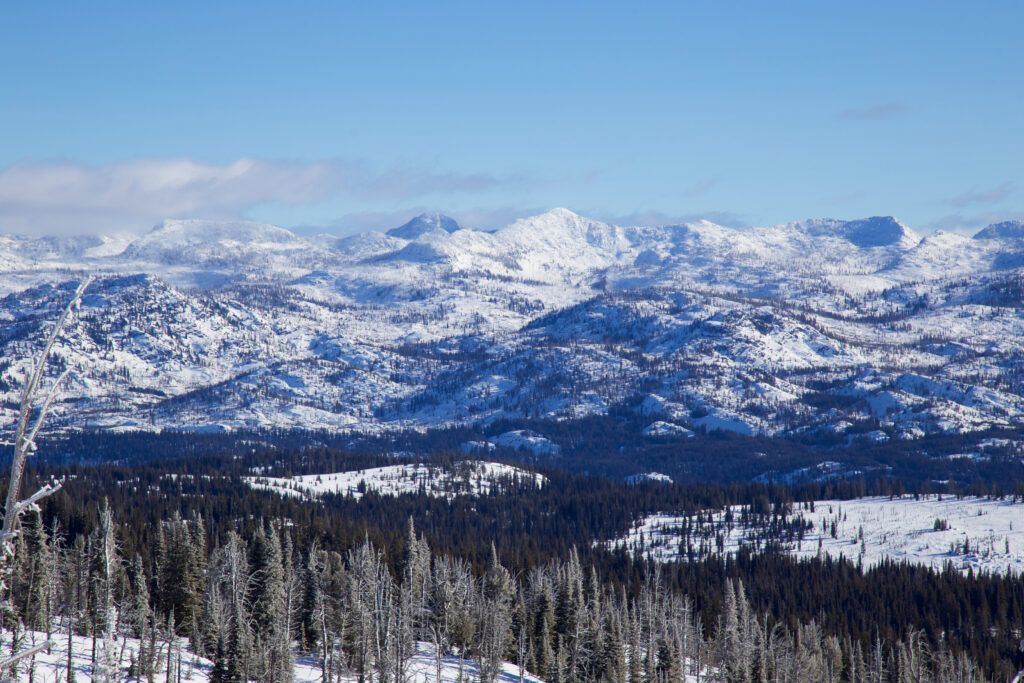
But McCall’s magic lies not in its activities, but in its rhythm — a slower, quieter pace that invites presence. Evenings by the lake are pure Idaho: the scent of woodsmoke, laughter echoing across the water, stars bright enough to touch.
Here, nature is not a backdrop but a companion — steady, welcoming, and infinite. McCall isn’t just a destination; it’s a feeling of coming home to the wild.
Stanley & the Sawtooths — The Wild Soul of Idaho

At the heart of the Sawtooth National Recreation Area, Stanley sits beneath jagged peaks that pierce the sky — a frontier village dwarfed by grandeur. With fewer than a hundred residents in winter, it feels less like a town and more like a testament to solitude.

The Sawtooth Mountains rise like frozen waves, their reflection mirrored in the turquoise waters of Redfish Lake. Hikers, anglers, and climbers come here not to conquer but to connect — to stand beneath the peaks and feel their own smallness. Elk graze in the meadows, and mornings break with the echo of rushing streams.
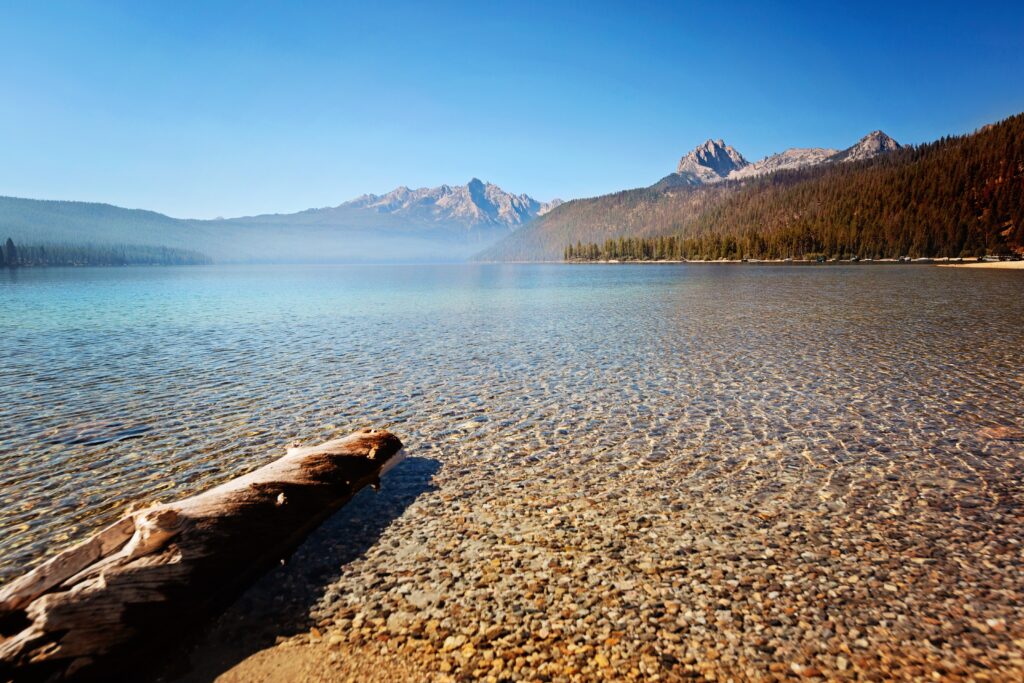
Stanley is one of the coldest places in the continental U.S., yet its spirit burns bright. Campfires flicker along the Salmon River, and in summer, the Sawtooth Music Festival fills the valley with song.
In a world that often feels too fast, Stanley offers the opposite — a reminder that silence can be sacred, and wilderness the truest kind of freedom.
Craters of the Moon — Earth’s Otherworldly Heart

Driving into Craters of the Moon National Monument feels like crossing into another planet. For miles, the earth turns black — waves of hardened lava stretch across the horizon, punctuated by cinder cones and surreal tunnels formed by molten rock.
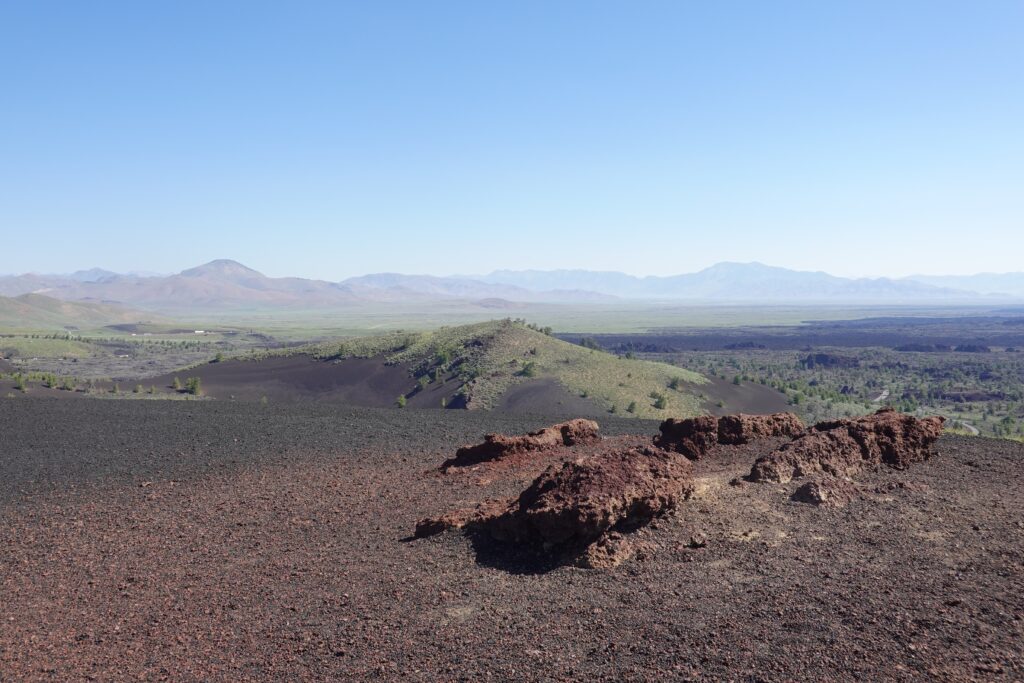
This landscape, shaped by ancient eruptions thousands of years ago, humbles and fascinates. Trails like the Inferno Cone and Tree Molds Trail guide visitors through geological time — where the earth’s fiery heart once broke the surface. In summer, wildflowers bloom defiantly among the lava, splashes of color against the obsidian plain.
The Shoshone people once crossed this region, calling it a place of spiritual power. Astronauts trained here before walking on the moon — fittingly, for nowhere else on Earth feels quite so alien.
Craters of the Moon is Idaho’s wild paradox: a place born of destruction that became a sanctuary for life. Standing there, amid wind and silence, one senses eternity — raw, untouched, and endless.
Salmon — River of No Return Country
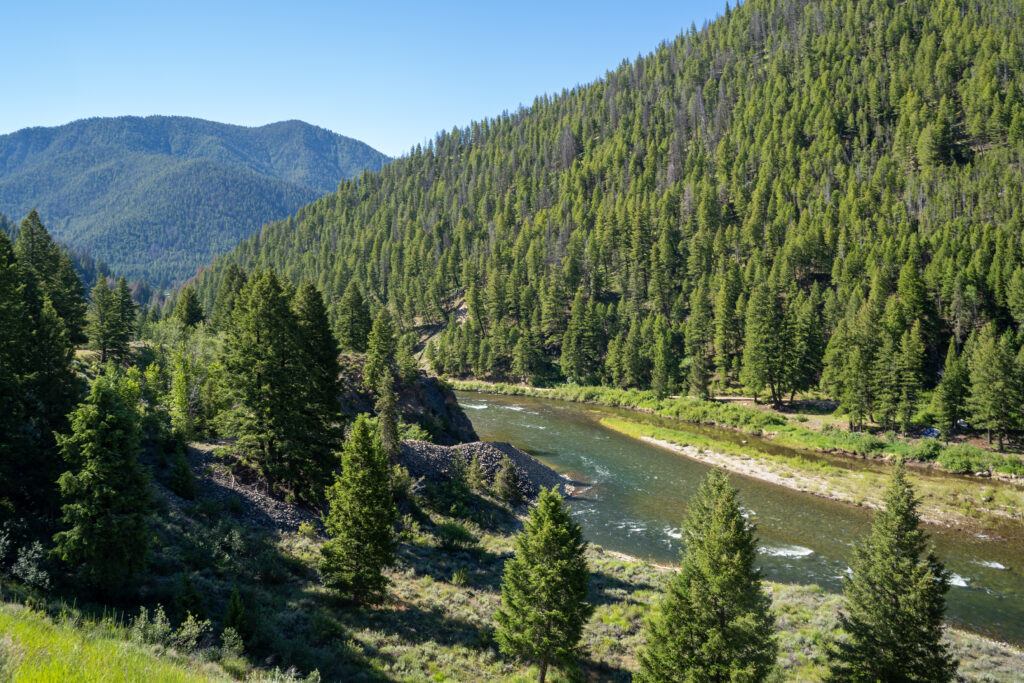
Tucked along the Salmon River, one of the last truly wild waterways in America, the town of Salmon is a gateway to the wilderness and a living echo of frontier history. Once a hub for trappers and miners, it remains a place where adventure and endurance still define daily life.

The river — known as the River of No Return — twists through deep canyons, past forests, and over rapids that challenge even seasoned boaters. Rafting through its currents isn’t merely a sport but a journey into silence and raw beauty. Bald eagles circle above, elk graze in hidden valleys, and the wind carries a timeless song.
Salmon also carries deep heritage: it was the birthplace of Sacagawea, the Lemhi Shoshone woman who guided Lewis and Clark. Her story lingers in the local Sacajawea Interpretive, Cultural & Educational Center, where past and present meet beneath the same wide sky.
Few places feel as wild, as sincere, or as connected to nature as Salmon. It is Idaho distilled — resilient, untamed, and breathtaking.
Hells Canyon — The Deepest Gorge in North America

Deeper than the Grand Canyon and twice as wild, Hells Canyon is Idaho’s greatest secret. Carved by the Snake River along the Oregon border, this 10-mile-wide chasm plunges more than 7,900 feet, revealing a landscape so vast it humbles even the most seasoned traveler.
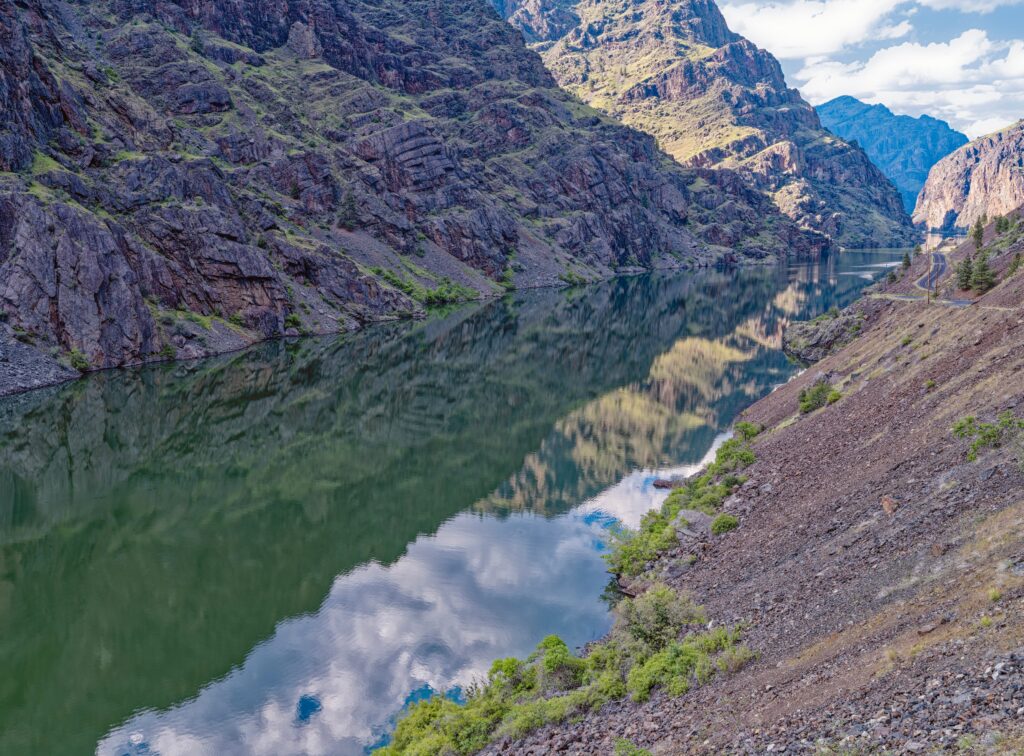
Jet boats roar through whitewater, bighorn sheep perch on impossible cliffs, and from the rim, the view stretches into eternity. The canyon’s name might sound foreboding, but its beauty is otherworldly — a cathedral of stone and sky.
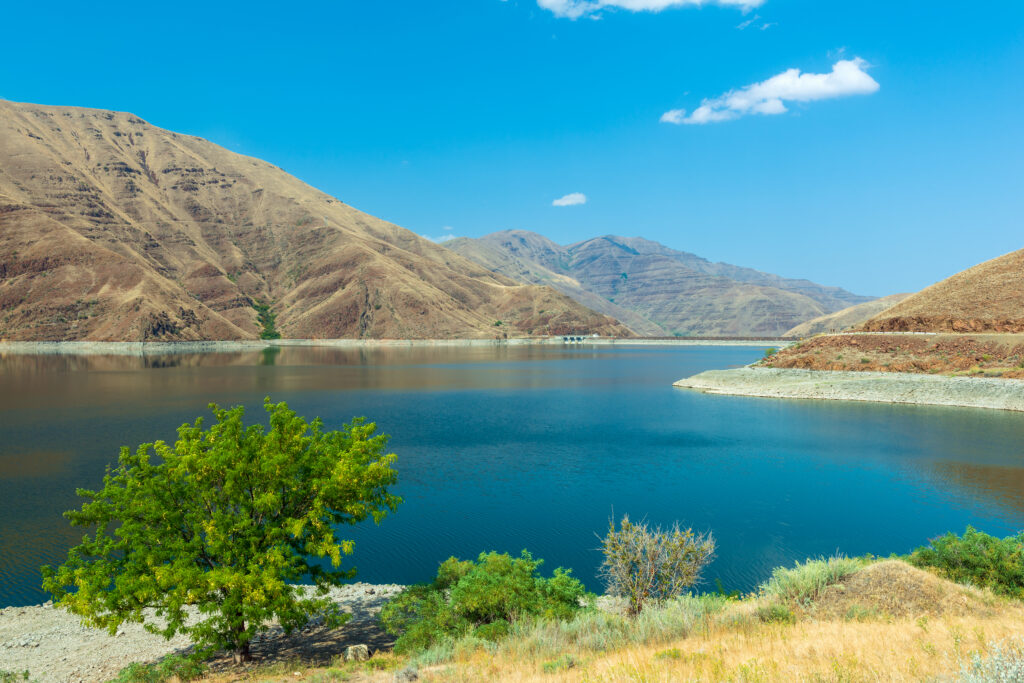
Trails wind through wildflower meadows, and ancient petroglyphs whisper of the Nez Perce people who once called this place home. Today, it’s a refuge for both wildlife and wonder.
To stand at Hells Canyon’s edge is to see the Earth laid bare — every layer a story of time, fire, and water. It is Idaho’s pure wilderness, fierce and eternal.
Pocatello — The Spirit of the West Lives On
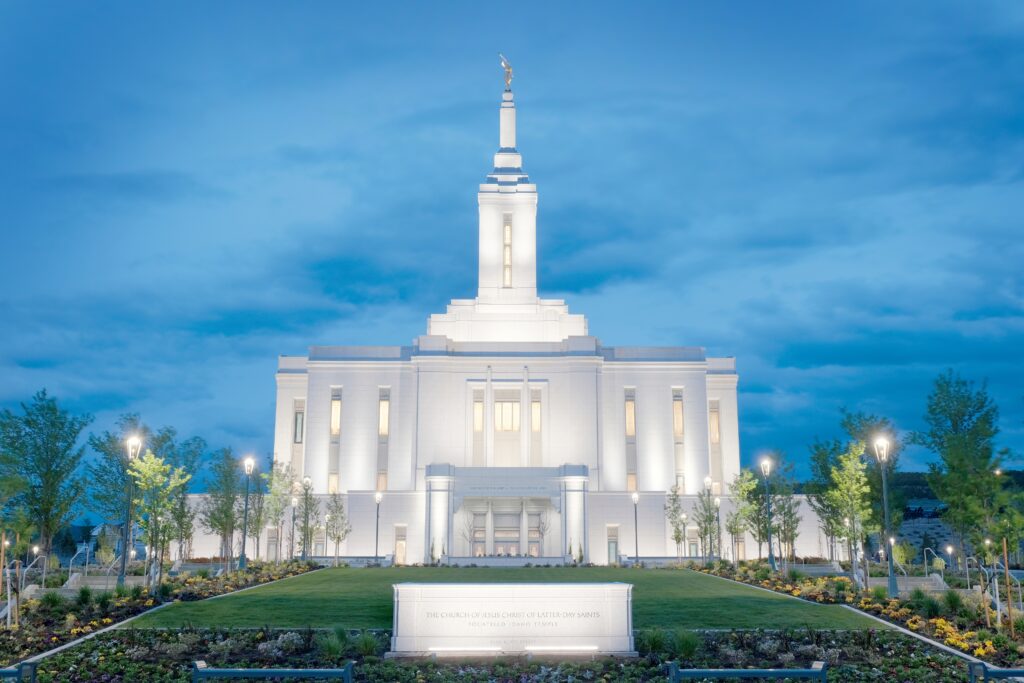
At the crossroads of mountains and desert plains lies Pocatello, the “Gateway to the Northwest.” Once a crucial stop on the Oregon Trail, it’s a city that still carries the pulse of exploration and change.
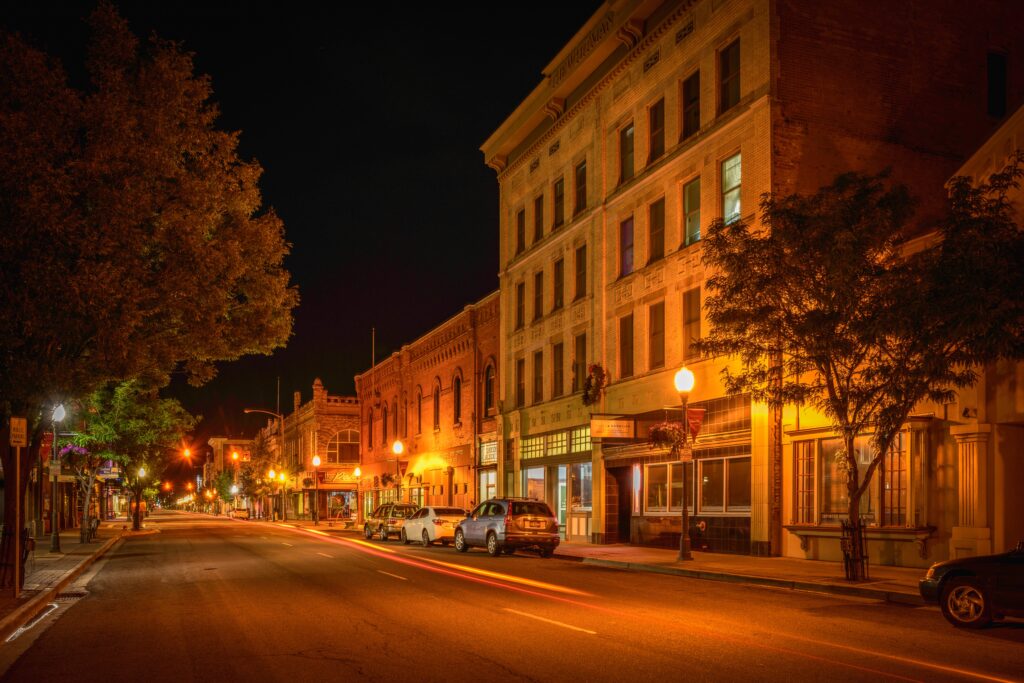
Named after a Shoshone chief, Pocatello blends frontier grit with university energy. Its streets hum with youthful creativity from Idaho State University, yet the surrounding landscape reminds you that wilderness is never far away. Hikers head for the City Creek Trail System, and history lovers explore the Museum of Clean — a quirky but fascinating celebration of innovation and human spirit.
Pocatello’s people reflect Idaho’s essence: resilient, welcoming, and independent-minded. Festivals fill the year with music and food, and autumn paints the Portneuf Range in hues of gold and crimson.
If Boise is Idaho’s heart, then Pocatello is its living memory — a bridge between old frontiers and new possibilities.
Wallace — The Silver Town That Time Forgot
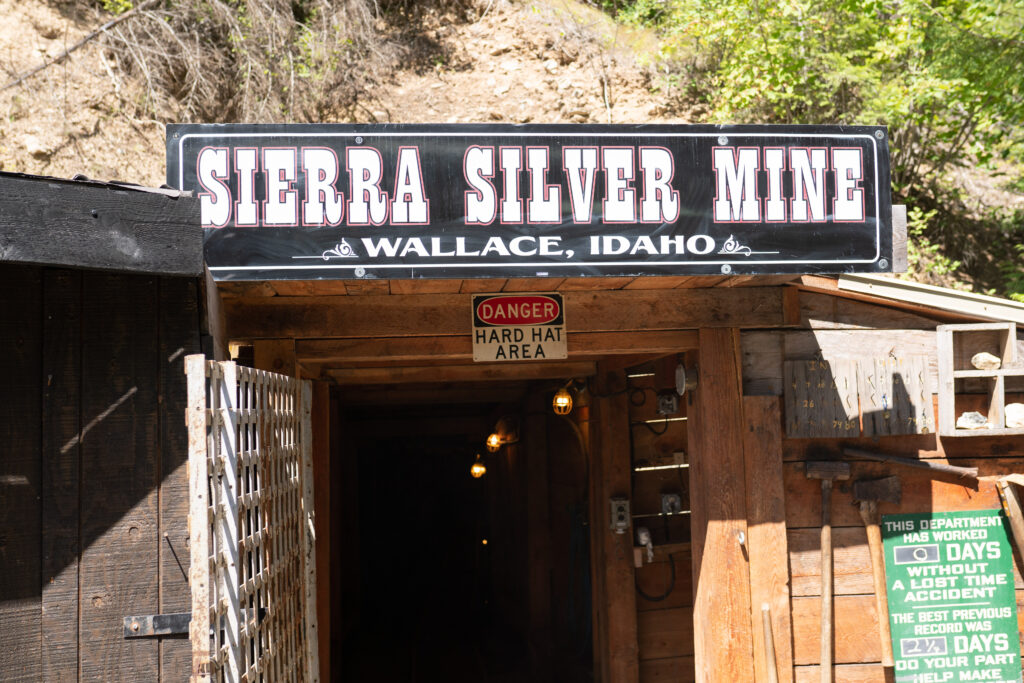
Cradled in the rugged Silver Valley of northern Idaho, Wallace is a living museum — a mining town where history lingers in every brick and neon sign. Once the “Silver Capital of the World,” Wallace was built by fortune seekers and dreamers who dug deep into the earth for a chance at glory.

Today, the entire town is listed on the National Register of Historic Places, preserving its 19th-century architecture, ornate saloons, and proud eccentricity. The Sierra Silver Mine Tour takes visitors underground, where miners still tell stories of danger and discovery. Above ground, the Northern Pacific Railroad Museum and quirky shops keep the frontier spirit alive.
But Wallace isn’t just nostalgia; it’s resilience made visible. After surviving fire, flood, and economic hardship, the town reinvented itself through heritage tourism and humor — even declaring itself “The Center of the Universe” with a plaque in the middle of town.
Set against a backdrop of forested mountains and winding roads, Wallace feels both lost in time and fiercely alive — a place where the Wild West never truly ended.
Kuna Caves — The Hidden Depths of Idaho’s Desert
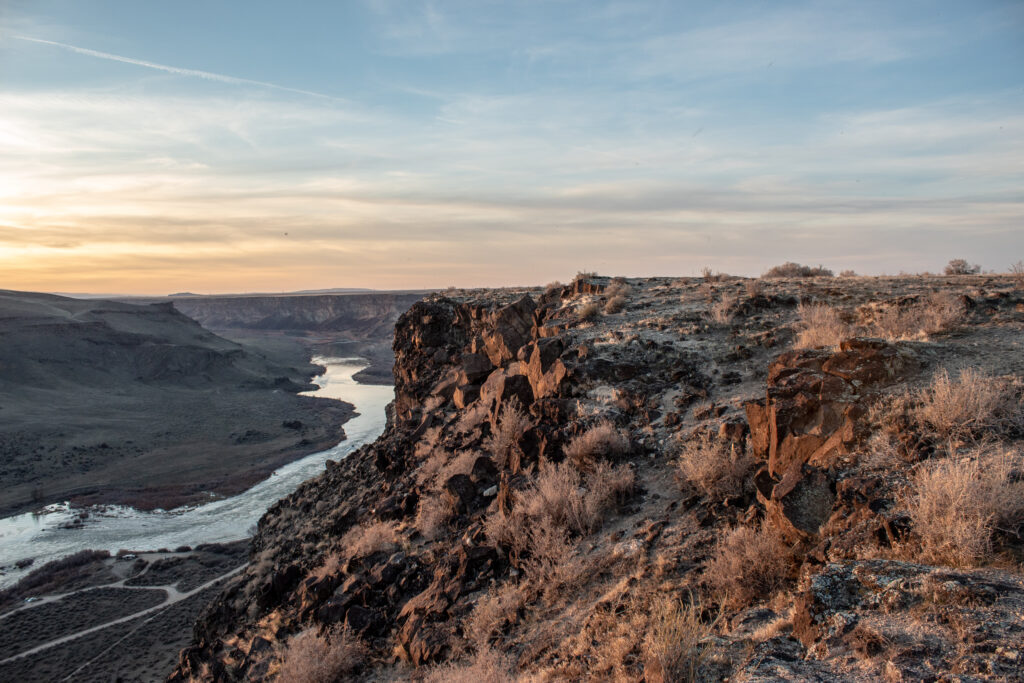
South of Boise, amid the arid plains near the town of Kuna, lies one of Idaho’s most mysterious natural wonders: the Kuna Caves. Beneath the sagebrush and basalt lies a labyrinth of lava tubes — remnants of volcanic eruptions that shaped the Snake River Plain thousands of years ago.
To reach them, visitors descend a metal ladder into the earth. The temperature drops instantly, the air cool and still, and sunlight fades into shadow. Inside, the caves stretch in eerie quiet, their walls glistening with mineral traces and history.
Few places capture Idaho’s volcanic past as vividly. The caves are raw, humbling, and strangely beautiful — a reminder that the surface of this state tells only half its story.
While the descent is not for everyone, those who enter the darkness emerge with a new respect for Idaho’s elemental nature — a land of fire and stone, where even the ground beneath your feet holds secrets.
St. Anthony Sand Dunes — The Whispering Desert of the North
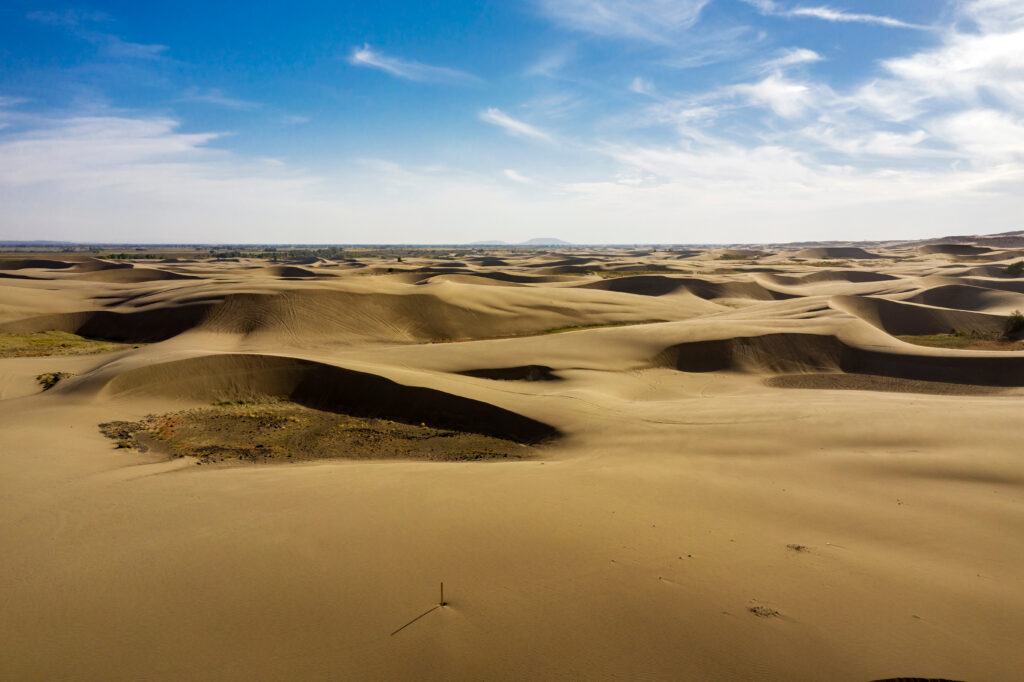
Just west of Rexburg, the St. Anthony Sand Dunes rise unexpectedly from Idaho’s high plains — 10,000 acres of rolling, wind-sculpted white. Created by ancient lakebeds and ceaseless winds, the dunes stretch toward the horizon like waves frozen in time.

Adventurers flock here for the thrill of motion: off-road riders race over crests, sandboarders carve graceful lines, and at sunset, the landscape glows gold against a deepening sky. Yet beyond the excitement lies quiet — moments when the only sound is wind and the soft hiss of shifting grains.
In spring, the dunes come alive with life. Elk and deer gather in the nearby Egin Lakes, and wildflowers bloom in improbable defiance of the desert.
Few places express Idaho’s dual nature — both fierce and fragile — as clearly as St. Anthony. It’s a desert made of movement and silence, shaped by time and the endless dance of wind.
Priest Lake — Idaho’s Hidden Paradise

Tucked away in the far northern tip of the state, just shy of the Canadian border, Priest Lake is often called “Idaho’s Crown Jewel.” It’s a place so pure and serene that it feels untouched by time — a mirror of pine and sky, framed by the Selkirk Mountains.
The lake stretches for nearly 20 miles, its waters deep and startlingly clear. Boaters drift through misty mornings, and hikers follow quiet trails through cedar forests where the scent of moss and rain fills the air. The nearby Upper Priest Lake, accessible only by boat or trail, adds another layer of solitude — a sanctuary within a sanctuary.
Priest Lake embodies the essence of Idaho’s north: untamed yet gentle, vast yet intimate. Wildlife abounds — moose wander the shorelines, eagles soar above, and loons call through twilight. In winter, snow cloaks the world in silence, and the lake becomes a glassy dream under pale light.
It’s a place for those seeking not excitement but renewal — a landscape that whispers rather than roars.
Driggs & the Teton Valley — The Other Side of the Mountains

While most travelers gaze at the Teton Range from the Wyoming side, those who venture west to Idaho discover a quieter revelation: the Teton Valley and the charming town of Driggs. Nestled against the western slopes of the Tetons, this area offers the same grandeur as Jackson Hole — but without the crowds.
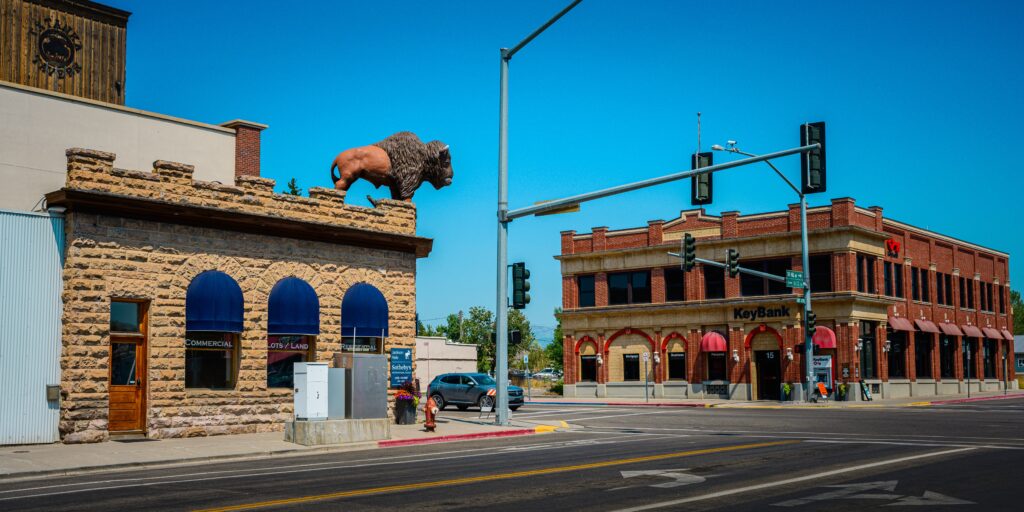
Driggs is a haven for artists, skiers, and wanderers who crave authenticity. The Teton Geotourism Center celebrates the land’s deep natural and cultural history, while nearby Grand Targhee Resort offers world-class powder in winter and wildflower meadows in summer.
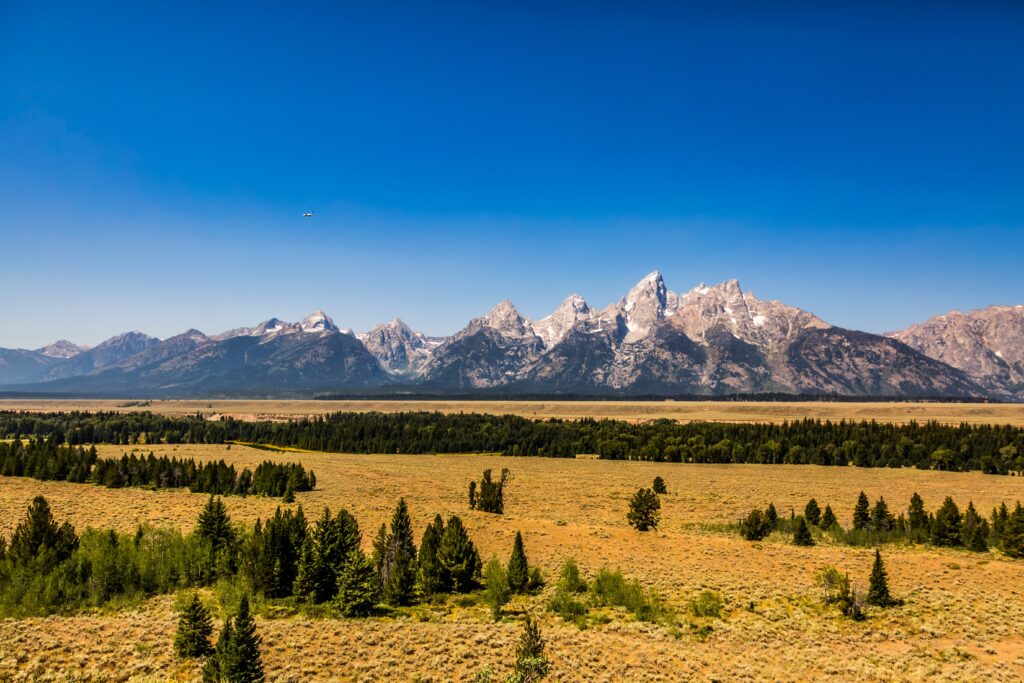
Here, the sunsets are legendary — the Tetons igniting in gold and rose light, mirrored in open fields and quiet rivers. Fly-fishing, hot-air ballooning, and horseback riding are part of everyday life, each offering new ways to meet the landscape.
In Driggs, nature doesn’t just surround you; it shapes the rhythm of your days. It’s a corner of Idaho that feels both remote and connected — where beauty speaks in whispers, not boasts.
Cascade — Where Water, Forest, and Calm Converge
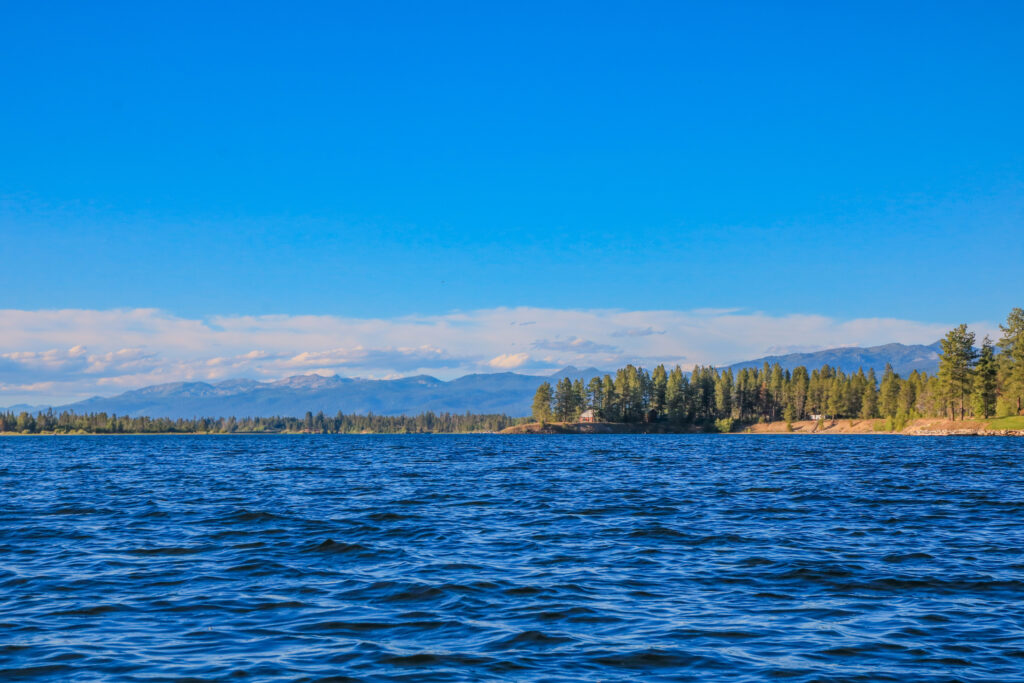
Along the scenic route north from Boise lies Cascade, a lakeside gem that feels both accessible and deeply tranquil. Its namesake, Lake Cascade, is a vast expanse of shimmering blue bordered by dense forest and rolling hills, offering year-round adventure and peace in equal measure.

In summer, sailboats and kayaks glide across the calm waters, while fishermen cast for trout at dawn. In winter, snow transforms the landscape into a playground for ice fishing, snowmobiling, and quiet reflection. The Cascade River Walk and nearby Warm Lake provide spaces for gentle wandering — where even a short stroll feels like meditation.
What makes Cascade special is its balance. It’s lively yet unhurried, wild yet welcoming. Locals share their town with visitors as though inviting them into a family ritual — one built around water, forest, and firelight.
Cascade reminds travelers that Idaho’s beauty isn’t just in its extremes — but in the quiet places between them, where the world feels whole.
Bruneau Dunes — Where the Desert Meets the Sky
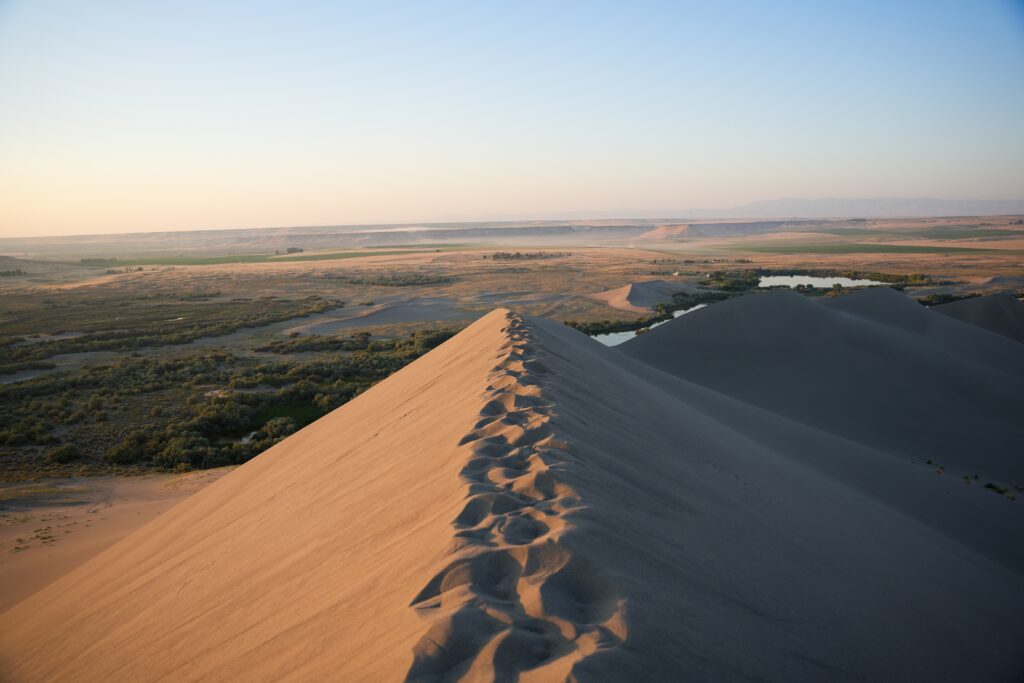
In the heart of southern Idaho, rising unexpectedly from sagebrush plains, stand the Bruneau Dunes — the tallest single-structured sand dunes in North America. The largest soars nearly 470 feet above the desert floor, its soft contours glowing gold at sunrise and bronze beneath the setting sun.

The dunes are a living landscape — ever-changing, shaped by wind and silence. Visitors climb to the crest, barefoot on warm sand, to feel the earth shift beneath them. From above, the desert stretches endless and empty, the air so clear that the horizon seems to shimmer with light.
At night, the Bruneau Dunes Observatory opens the heavens. Under skies free from light pollution, telescopes reveal galaxies and constellations with astonishing clarity — a reminder that Idaho’s wilderness extends far beyond the earth itself.
It’s a place of paradoxes: harsh yet inviting, barren yet full of life. Here, the desert doesn’t feel empty — it feels infinite.
Owyhee Canyonlands — Idaho’s Last Frontier

Remote, rugged, and hauntingly beautiful, the Owyhee Canyonlands are often called “the Grand Canyon of Oregon and Idaho.” But names barely do justice to their immensity. This region — an intricate maze of volcanic cliffs, sagebrush plateaus, and hidden rivers — is one of the most untouched wildernesses in the United States.
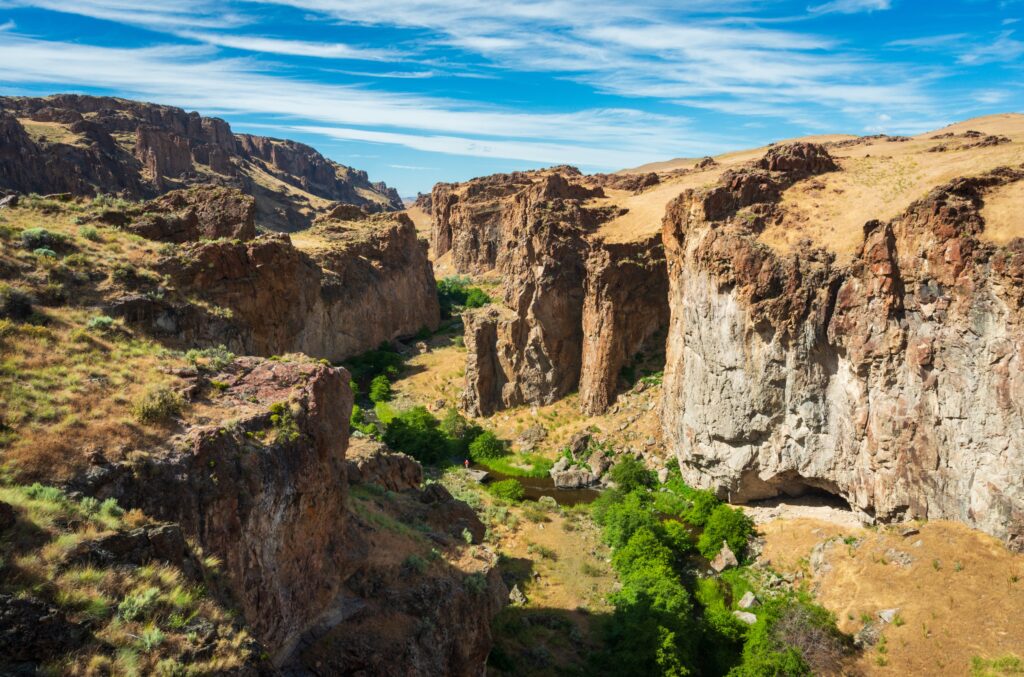
The Owyhee River winds through canyons hundreds of feet deep, where hawks wheel in silence and wildflowers cling to the rock. Few roads penetrate this vastness; it is best explored by raft, horseback, or sheer curiosity.
Every bend in the canyon tells a story of fire and water, of erosion and endurance. Ancient petroglyphs still mark basalt walls, echoes of the Shoshone and Bannock peoples who once traversed these lands.
To stand in the Owyhees is to feel the world stripped of pretense — raw, immense, and achingly beautiful. It’s Idaho’s frontier in the truest sense: wild, remote, and defiantly free.
Lewiston — Where Two Rivers Become One

At the meeting of the Clearwater and Snake Rivers, Lewiston rests in a natural amphitheater of water and hills. Once a gold rush boomtown and briefly Idaho’s first territorial capital, it’s now a graceful city where history and river life flow together.

The confluence defines everything here. Riverboats glide along the Snake, linking Lewiston to the Pacific via the Columbia River — making it Idaho’s only seaport, though it lies hundreds of miles inland. The Clearwater River Casino, Nez Perce National Historical Park, and waterfront trails celebrate both heritage and continuity.
Surrounded by vineyards, orchards, and soft hills, Lewiston has evolved into one of Idaho’s most unexpectedly charming cities. The downtown hums with cafés, art galleries, and festivals that draw people from across the region.
At sunset, when the rivers merge in ripples of gold, Lewiston feels like a place born from movement — where past and present, nature and civilization, meet and flow as one.
Moscow — The Cultural Heart of the Palouse

Nestled amid the undulating wheat fields of the Palouse, Moscow is a town that feels alive with thought and creativity. Home to the University of Idaho, it blends academia, artistry, and community in equal measure — a place where ideas grow as naturally as the fields that surround it.
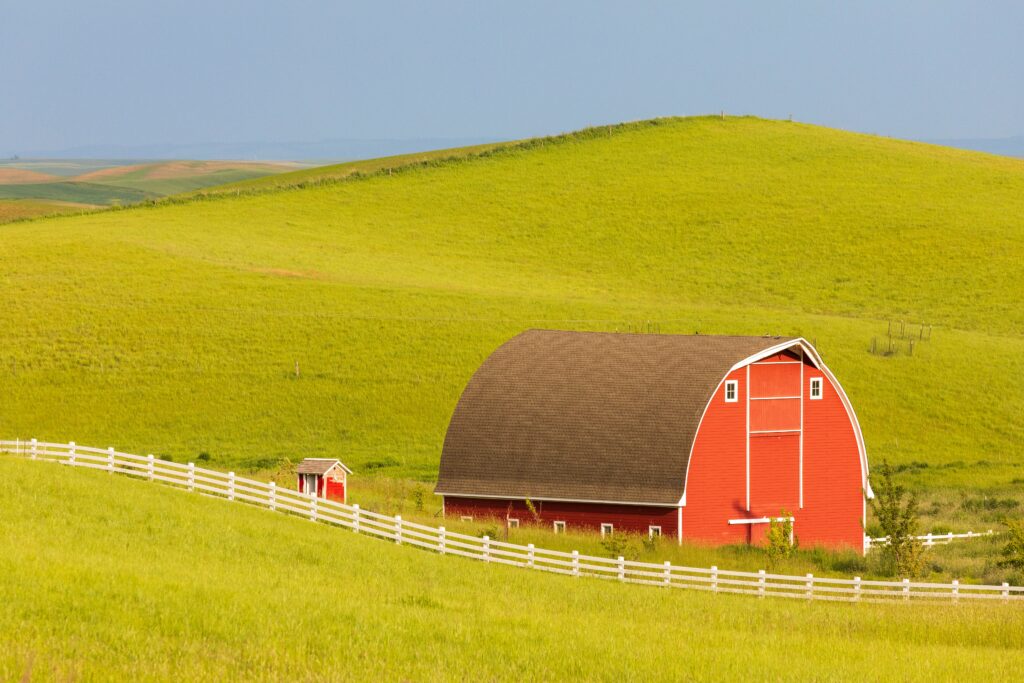
Tree-lined streets lead to cozy cafés, independent bookstores, and music-filled venues. The Moscow Farmers Market, held weekly from spring through fall, turns downtown into a festival of color and conversation. Local artists showcase their work, musicians play on every corner, and the scent of roasted coffee mingles with that of fresh bread.
The town’s intellectual energy is balanced by a deep love for nature. Trails and bike paths wind through the countryside, and the nearby Moscow Mountain offers panoramic views of golden hills that seem to ripple endlessly under the sun.
Moscow embodies Idaho’s gentler spirit — one of openness, curiosity, and connection. It’s a town that doesn’t shout its beauty but lets it unfold in every shared smile and quiet street.
The Palouse Hills — Idaho’s Living Canvas
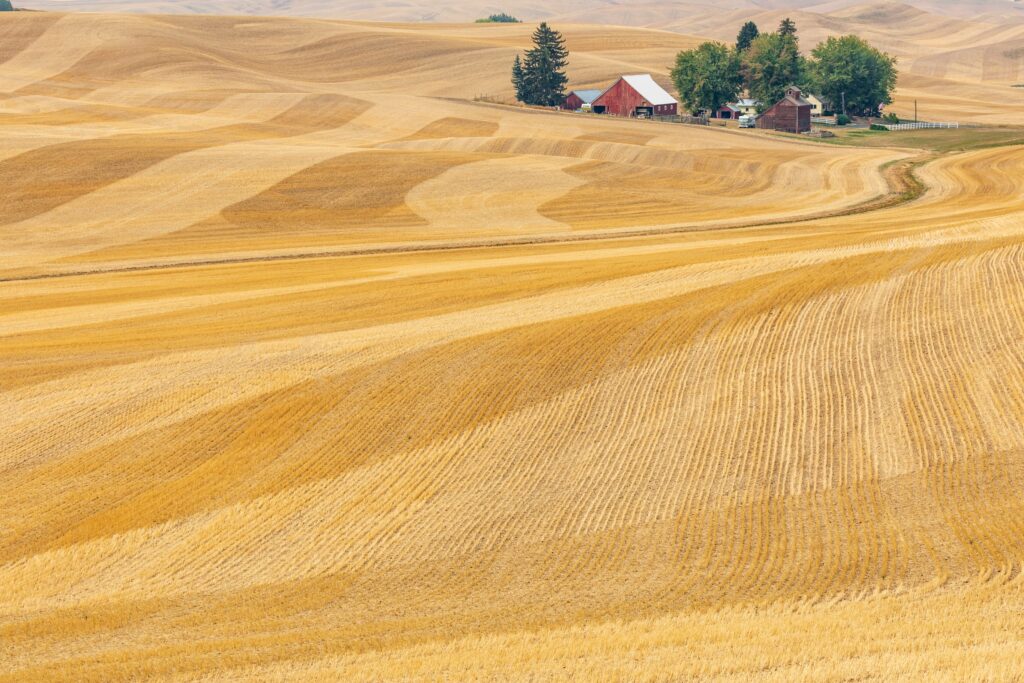
Few landscapes in America are as mesmerizing as the Palouse Hills, a sea of rolling earth that stretches across north-central Idaho and into Washington. In spring, the hills shimmer in shades of emerald; by late summer, they glow like spun gold beneath the high sky.
This is the land of wheat and wind — a place shaped by time and nature’s patient hand. Formed from ancient volcanic dust and centuries of cultivation, the Palouse seems almost painted, its curves soft and endless.

Photographers and painters come here from around the world to capture its shifting light. From the summit of Steptoe Butte, the view is transcendent — waves of land flowing into infinity, changing hue with every passing cloud.
But the Palouse is more than scenery; it’s a story of coexistence. Farmers, small towns, and wildlife share this land in quiet balance, each part of a living mosaic. To stand among these hills is to feel serenity and continuity — the heartbeat of Idaho’s northern soul.
Island Park — Gateway to the Yellowstone Wilds

On Idaho’s eastern edge, just beyond the shadow of Yellowstone National Park, lies Island Park — a land of rivers, pine forests, and quiet wonder. Its claim to fame is geographical: it boasts the longest main street in the world, stretching 33 miles through pristine wilderness.
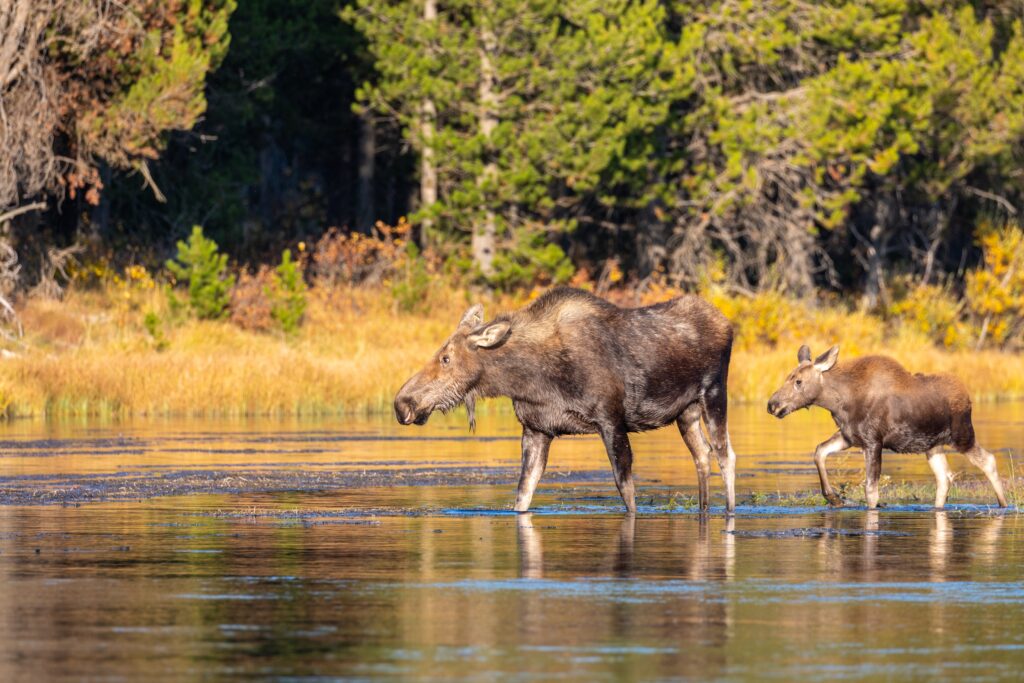
But Island Park’s magic runs deeper than novelty. It’s a paradise for anglers and nature lovers — the Henry’s Fork of the Snake River is world-renowned for trout fishing, and the Harriman State Park offers miles of trails through meadows and wetlands alive with elk, swans, and moose.
In winter, snow turns the region into a hushed white expanse, ideal for cross-country skiing or simply listening to the silence of falling flakes. The air feels cleaner, the stars brighter, the moments longer.
Island Park is a threshold — between civilization and wilderness, between movement and stillness. Here, the rhythm of nature still guides the day, and every dawn feels like discovery.
Lava Hot Springs — The Healing Waters of the West

Tucked into the Portneuf River Valley in southeastern Idaho, Lava Hot Springs has long been a place of rest and renewal. For centuries, the Shoshone and Bannock tribes came here to bathe in the natural thermal pools, believing the waters carried healing power. Today, that same spirit endures — a warm refuge in every season.
The mineral springs flow naturally at perfect soaking temperatures, cascading into a series of modern pools framed by gardens and mountain views. Steam rises in winter like whispers from the earth, and in summer, the river beside town invites tubing and laughter under the sun.
Beyond the pools, Lava Hot Springs exudes small-town charm — cozy inns, cheerful shops, and trails winding into pine-scented hills. The air feels lighter here, the pace slower, as if time itself pauses to breathe.
To visit Lava Hot Springs is to rediscover calm. It’s not just water that heals, but the feeling of stillness it inspires — that rare sense of balance between the natural and the human, the ancient and the now.
Bonners Ferry — A Valley Between Mountains
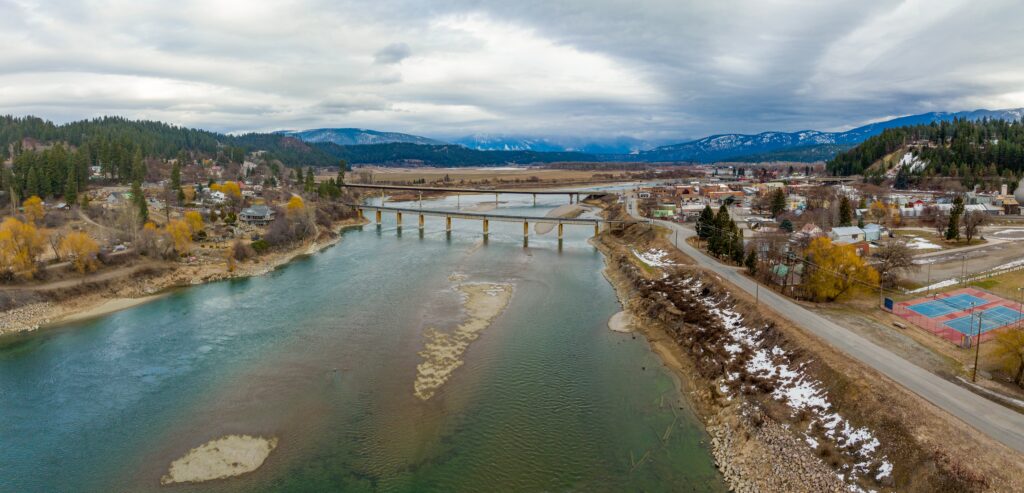
Far in the north, near the Canadian border, lies Bonners Ferry, a town that seems carved from serenity. Nestled in the Kootenai River Valley, surrounded by forested peaks, it feels like a secret place — unhurried, radiant, and deeply connected to its landscape.
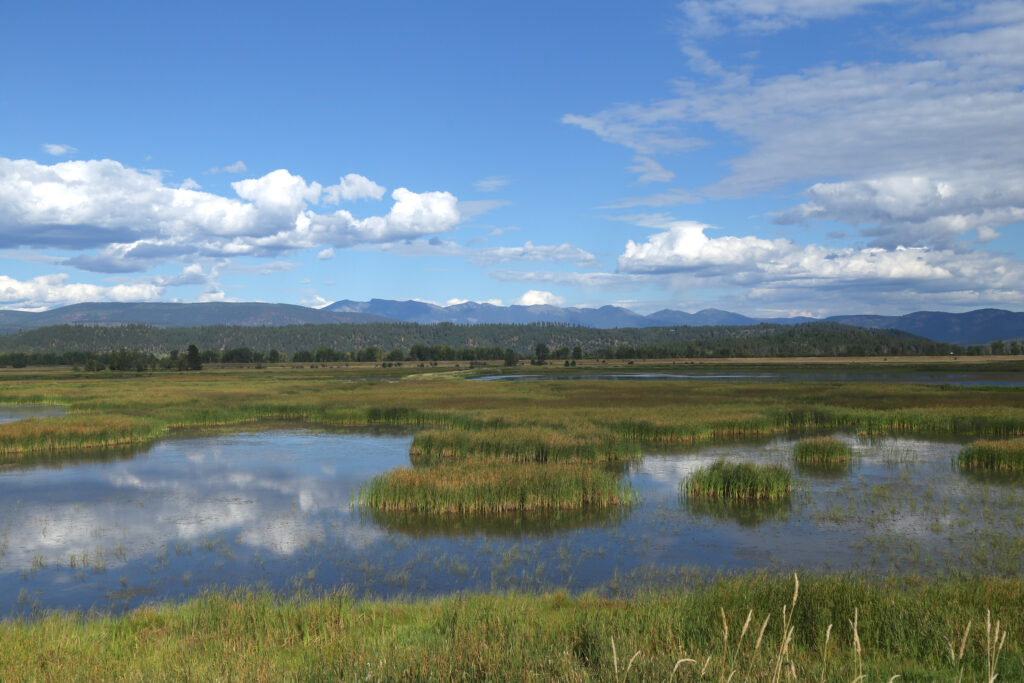
Founded as a ferry crossing in the 19th century, Bonners Ferry remains a bridge — between past and present, wilderness and community. The Kootenai National Wildlife Refuge nearby is a paradise for birdwatchers and photographers, home to eagles, moose, and migratory flocks that fill the sky each spring and fall.
Downtown, wooden storefronts and cafés exude a quiet friendliness. The people here know the land and live by its rhythms — harvesting, fishing, hiking, or simply admiring the view from the river’s edge.
Bonners Ferry feels like the Idaho of the imagination — a town where beauty isn’t performed but simply is, steady as the mountains that watch over it.
Bear Lake — The Caribbean of the Rockies
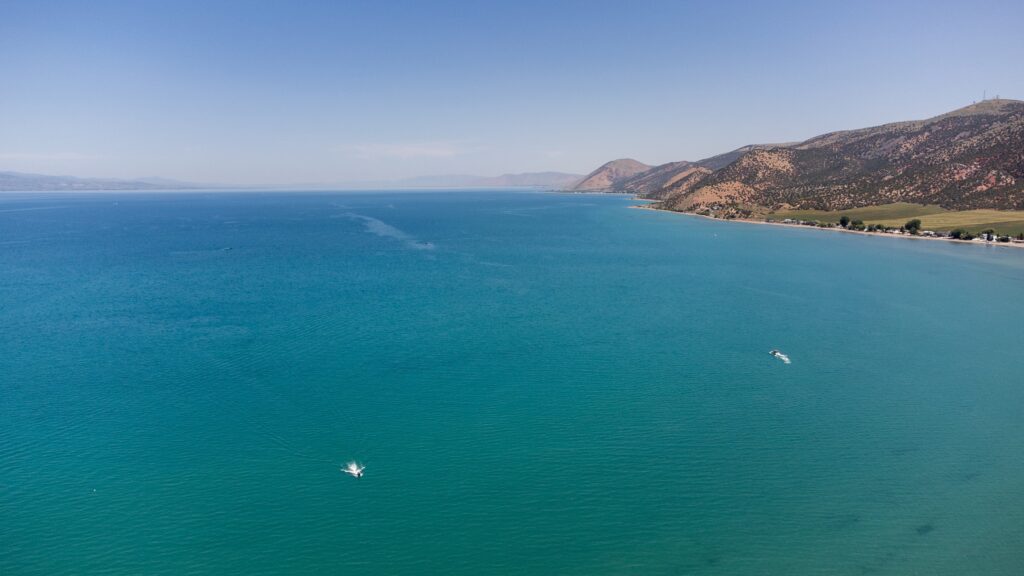
Straddling the border of Idaho and Utah, Bear Lake is a vision of turquoise so vivid it seems unreal. Locals call it the “Caribbean of the Rockies” — and with good reason. Its striking blue-green waters shimmer beneath open skies, shifting color with the light and wind.

Formed by ancient earthquakes and fed by pure mountain springs, Bear Lake stretches for 20 miles, offering both adventure and tranquility. Boating, sailing, and swimming fill the long summer days, while nearby trails wind through aspen forests alive with birdsong.

The towns of Paris, Montpelier, and St. Charles preserve pioneer history, their charm rooted in simplicity. And no visit is complete without tasting the region’s famed raspberry shakes, a local tradition that turns sweetness into memory.
At sunset, when the water glows gold and rose, Bear Lake feels infinite — a mirror reflecting both earth and heaven. It’s a fitting final chapter for Idaho: wild, gentle, and profoundly beautiful.

